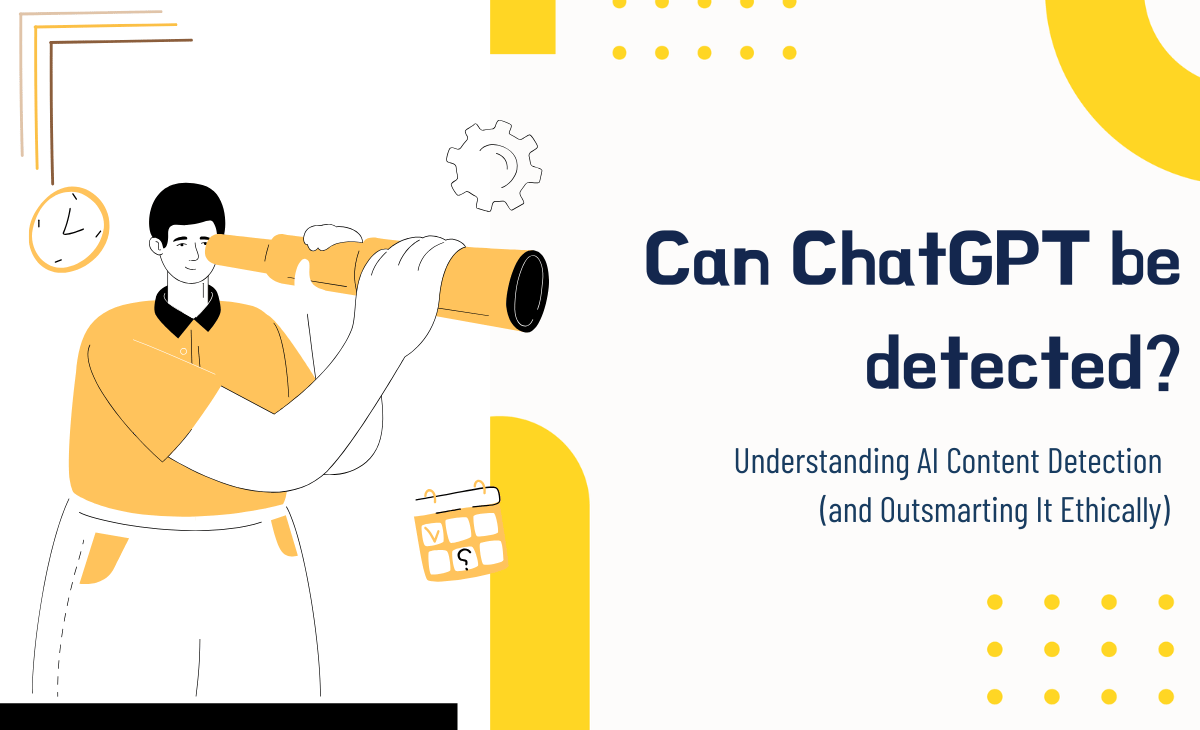You can be a student stressed with deadlines or a marketer dodging SEO penalties, but you will wonder the same thing: Can ChatGPT Be Detected? As you like relying on ChatGPT for a little support, be it for your research or creative brainstorming.
If you struggle with letters or learning in general, a tool like ChatGPT is undoubtedly a blessing. But there is a problem in a setup like this: no one likes to read AI-generated content, regardless of who you are!
Using ChatGPT in an academic environment can result in unfair advantages and a lack of practical experience in the marketing field. So, we started relying on AI detectors to help identify AI-generated content and have an upper hand.
But things got complicated from there on. The detectors started behaving faultily and led to a real loss of opportunities in every sector.
We now live in fear of being wrongfully flagged, which restricts us from using AI or our creativity to its full potential. Since most of the detectors tend to flag human-written content, too! So, how does one go about their day during a time like this? Let us find out.
How AI Detectors Work (And What They’re Really Looking For)
The reason the need for a detector came up was simple: we needed more authenticity in our writing. We couldn't allow students to simply rely on machine-generated work and pass important milestones. The marketing scene was no different either, with Google starting to prioritize authentic content, and there was a need for intervention. So we came up with AI detectors to help solve the issue.
Now, an AI detector is a tool that scans a given piece of text and flags any AI-generated content in it. But what are the giveaways of AI-generated writing, and how can a tool identify it? Well, here’s how:
We know that AI detectors don’t know what the difference is between AI-generated content and human-generated content. All it knows are patterns and words, and it follows a certain trail to make its judgment.
Perplexity: How Surprising Are Your Words?
A detector like Turnitin or ZeroGPT understands that sentences that have more complexity are usually human-written. Since a writing tool has to depend on a dataset and a set pattern of words to form a sentence. So the detectors always look for predictable sentences to mark them as robotic.
Quick Tip: AI detectors tend to flag overly obvious or predictable sentences. So, if you write something like “The dog chased the ball,” there’s a high chance it will be marked as AI-generated. The more predictable your word choices are, the more likely they will come across as “suspiciously robotic.”
Burstiness: Do Your Sentences Have Rhythm?
Our writing is a mixture of short sentences, long ones, abrupt thoughts, and flowing paragraphs—the natural bursts of how a human writes. But things are significantly different with AI. It tends to follow a rigid pattern, often resembling an instructional manual or even a legal summons.
So, detectors are designed to capitalize on this gap, identifying AI-generated text by its lack of variation. Here’s a quick example: This is a sentence. This is another one. Here is a fact. That is also true.
We don’t write like this. Human narratives usually rely on a more complex and versatile rhythm.
Repetitive Structures and Robotic Tone
Sometimes you won’t even need a detector to identify an AI-generated work because it’s that obvious. When you see a write-up using repetitive phrases and relying on a tone that has no refined layers, even you will know that’s AI. Some phrases used apart from the obvious ones are as follows:
- “As previously mentioned…”
- “According to recent studies…” (without citing any)
- “It can be argued that…”
- “This highlights the fact that…”
In short, if your writing feels too safe, too clean, too robotic, and with less variation, the detector might flag it as AI.
But an observation like this raised an important question: What about the writers who believe in writing a clean, safe, and to-the-point? This is where the entire sanctity of AI detection crumbles. Since the tools are not yet capable enough to apply context as they scan for robotic content.
False Positives and the Great ‘Robot’ Misunderstanding
The concept of a false positive is when an AI tool misjudges human-written content. It is a very common occurrence, especially for someone in line to submit a paper or writing on SaaS content. Since it is expected of them to be formal, technical, and to the point. But the AI detector doesn’t understand that! All it knows is to pick up a suspicious phrase and cry AI.
One might just move past this, calling it a technical glitch, but things are not this simple for the ones facing the consequences. In educational settings, it might mean rejection from a college application, a failed assignment, or even disciplinary action.
For professionals, it could result in a declined freelance project or flagged content on publishing platforms. Moreover, it can also lead to your content being buried in Google’s algorithm. Hence, this false-positive AI detection has created a sense of panic everywhere. Writers are now more worried about defending their authenticity than flaunting their creativity.
In fact, things look comparatively grim for the non-native speakers. A study published by Stanford University shows that the detectors flagged more than half of TOEFL essays (61.22%) written by non-native English students as AI-generated.
We Put ChatGPT to the Test: Can It Be Detected?
At this point, ChatGPT is one of the finest writing tools that is out there in the market. So, we were under the impression that it might be able to deceive any popular detector on the market and give us some respite. We asked ChatGPT to write a technical blog on a new AI tool that writes for an academic submission. This is how the introduction read:
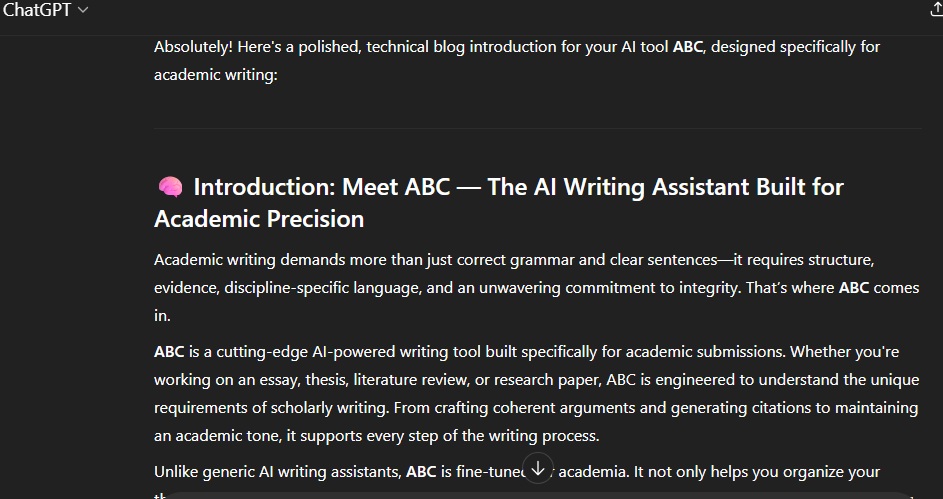
Now it was time to face the reality, and we asked ZeroGPT and Copyleaks to help detect the above ChatGPT-written sample, and this was the result:
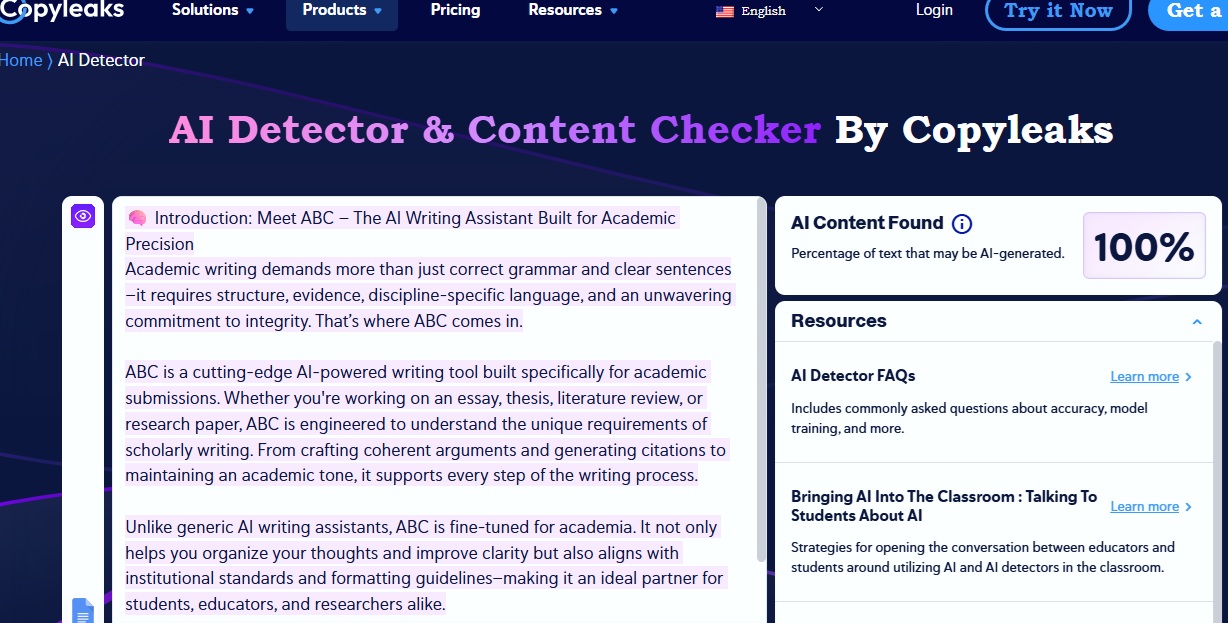
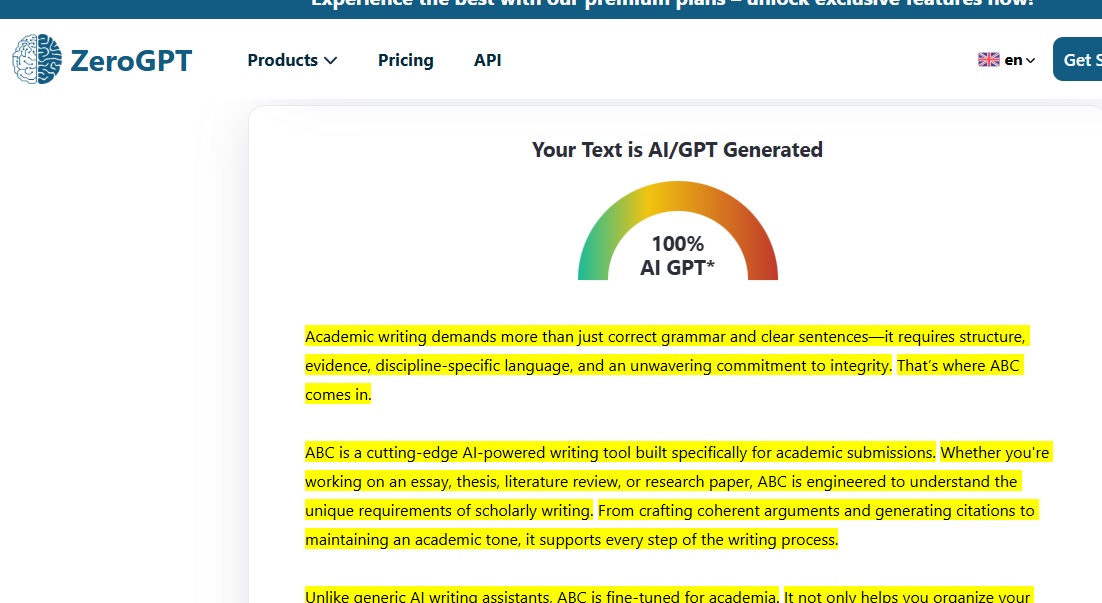
A situation like this puts us in a dilemma. On one hand, we have seen how AI detectors have incorrectly flagged academic papers written by real humans. On the other hand, they are accurate in flagging ChatGPT-generated content. So, how is a student or a writer expected to survive creatively in a confusion like this?
This is where HumanizeAI.io can be an ideal solution, not as a way to “trick” detectors, but as a tool to bring your voice back into the writing.
Bypass or Balance? The Ethical Way to Sound Human
The idea behind bypassing content is not to adapt unfair means and have an upper hand over the detectors. It’s about having an ease of access when you are struggling with your original content or are trying to work with ChatGPT to get rid of your creative block.
So a tool like Humanize AI helps you achieve that balance while you can focus more on the things that require your attention. It can mean a different thing to different people depending on where you are with the line of your work.
The goal isn’t to fool the system, but to bridge the gap between human thought and machine language.
- For Students: It can help polish an AI-assisted outline into a readable, original submission that reflects your thought process.
- For Marketers: It transforms robotic copy into messaging that connects and converts.
But it’s also up to you to ensure you don’t cross the line and over-rely on AI tools to the point where it compromises your originality or intent. You can check our guide, Is Using AI Cheating? How to Use AI Humanizer Responsibly for School for further assistance and clarity.
Now coming back to the point, a tool like Humanize AI can help you not only refine ChatGPT-generated writing but also help in enhancing your own work in this detector dilemma.
We refined the sample generated by ChatGPT with Humanize AI and then checked it for ZeroGPT and Copyleaks bypass. These are the results:
- ChatGPT sample text refined with Humanized AI for ZeroGPT
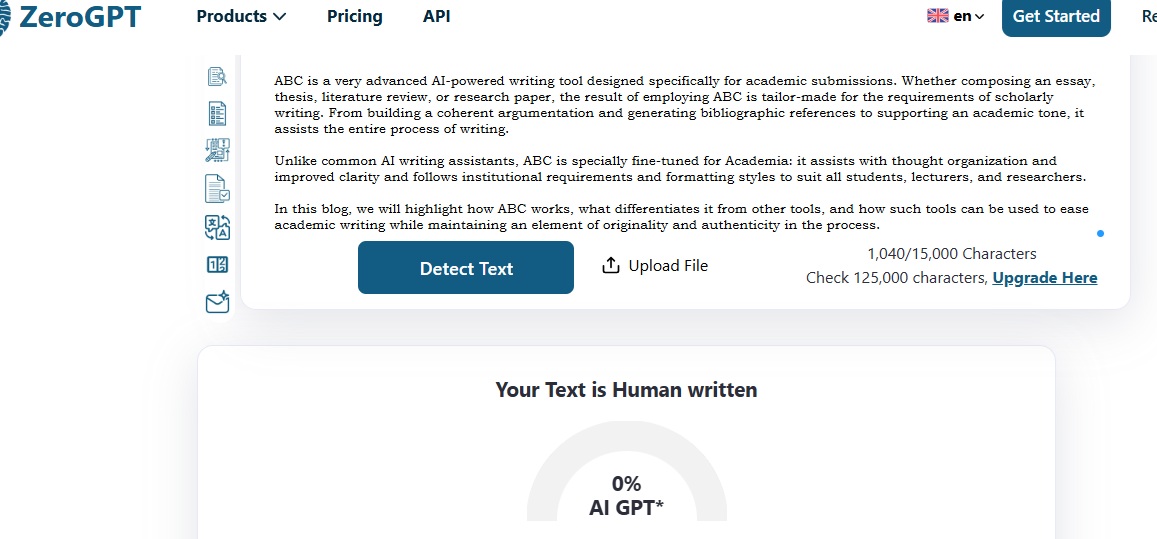
- ChatGPT sample text refined with Humanized AI for Copyleaks
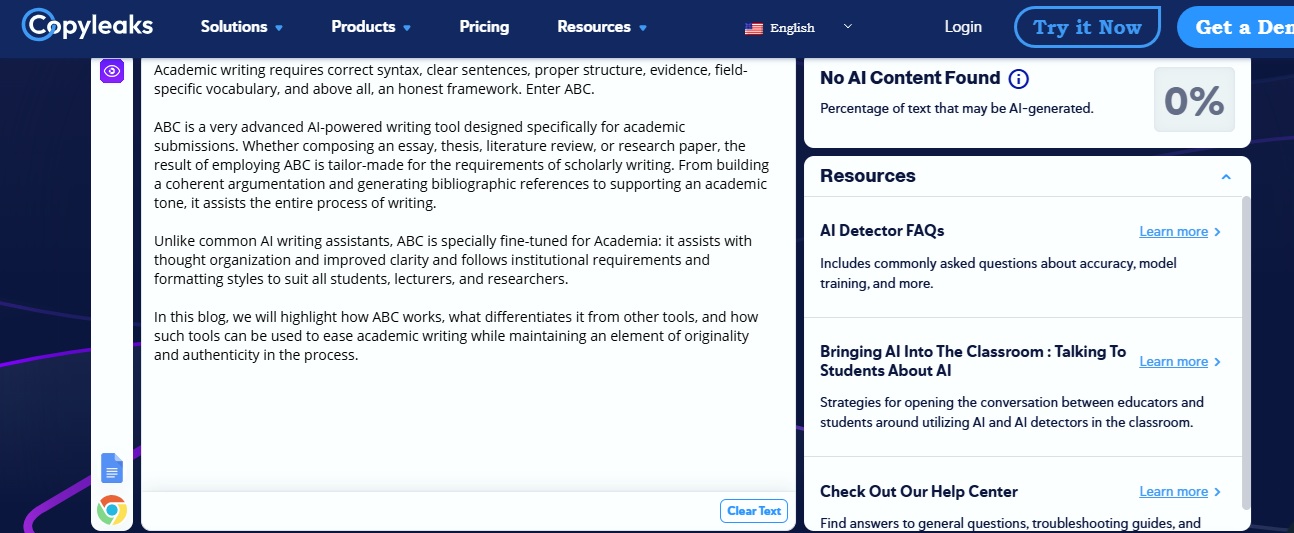
- Humanize AI working with ChatGPT sample
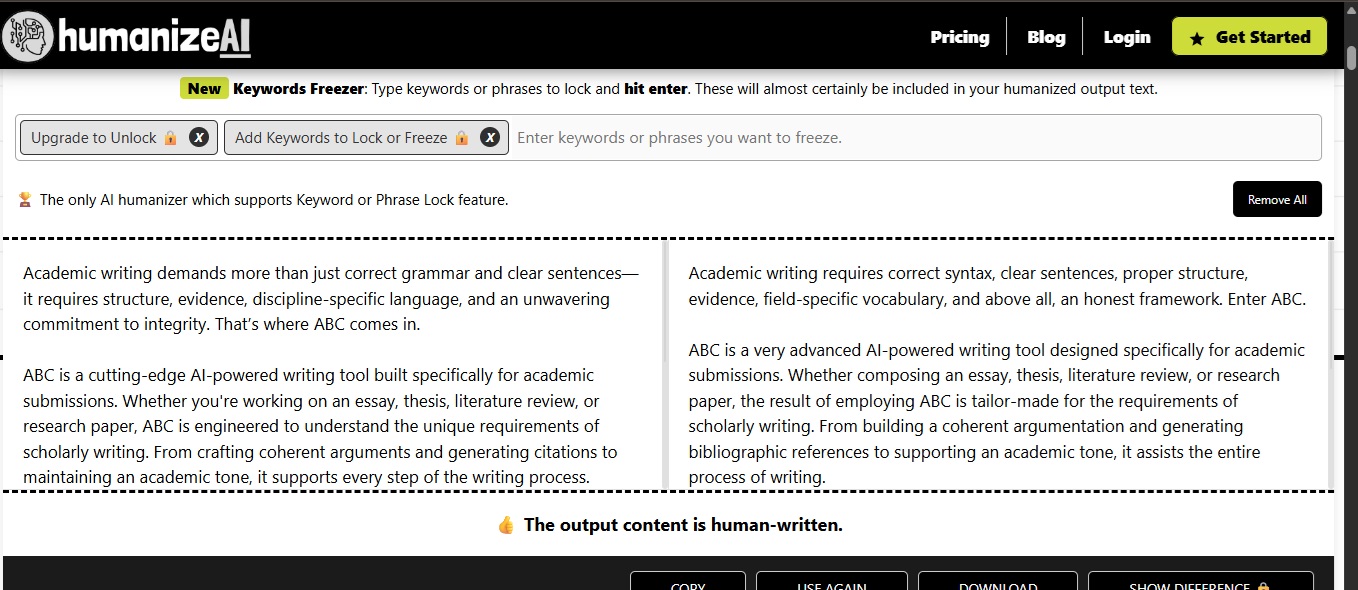
As you can see here, it took one copy and paste for me to make ChatGPT-generated content read more human and convince the detectors otherwise. So the answer to the question, Can ChatGPT be detected is not actually in black and white.
It’s far more nuanced. Detection tools rely on patterns, not context, and can’t always distinguish between clean, clear human writing and AI writing. But with the right edits or a tool like Humanize AI, you can rely on a tool like ChatGPT without compromising your authenticity or ethics.
Striking the Right Balance: Ethics, AI, and the Human Voice
At the end of the day, a tool like ChatGPT is not invincible. No matter how polished it gets, it will never be able to mimic human writing. But it can always be used to brainstorm ideas and create that first draft, which can save you hours of handwork.
In a setup like this, a tool like Humanize AI helps you maintain your integrity by not only refining your original content but also ChatGPT-generated work. However, maintaining the sanctity of this ease of access is on us.
As irresponsible use of AI can lead to diluting your voice and a hit on your credibility. So it’s on you to ask the important question, like “How do I use it responsibly?” instead of simply wondering, “How can I get away with it?”
Responsible AI use isn’t about bypassing systems; it’s about enhancing your message without losing your identity.
It’s Not About Beating the Detector, It’s About Owning Your Words
Let us get one thing straight: an AI detector can never be the measure of your authenticity, as they are unstable in nature. Since they rely on patterns and structure, they always confuse AI-generated and human-written work.
So, you must shift your focus here and understand that it is not about beating a detector or wondering if ChatGPT can be detected. It’s about how you show up in your work and how your writing reflects your voice.
Yes, tools like ChatGPT and Humanize AI can support your process. They can help you articulate, organize, and polish. But they can’t replace your perspective, your creativity, or your accountability.
You must always remember that the goal is not to create content or write a paper for the sake of just passing the detectors. It’s about doing work that connects and reflects you in your work.

